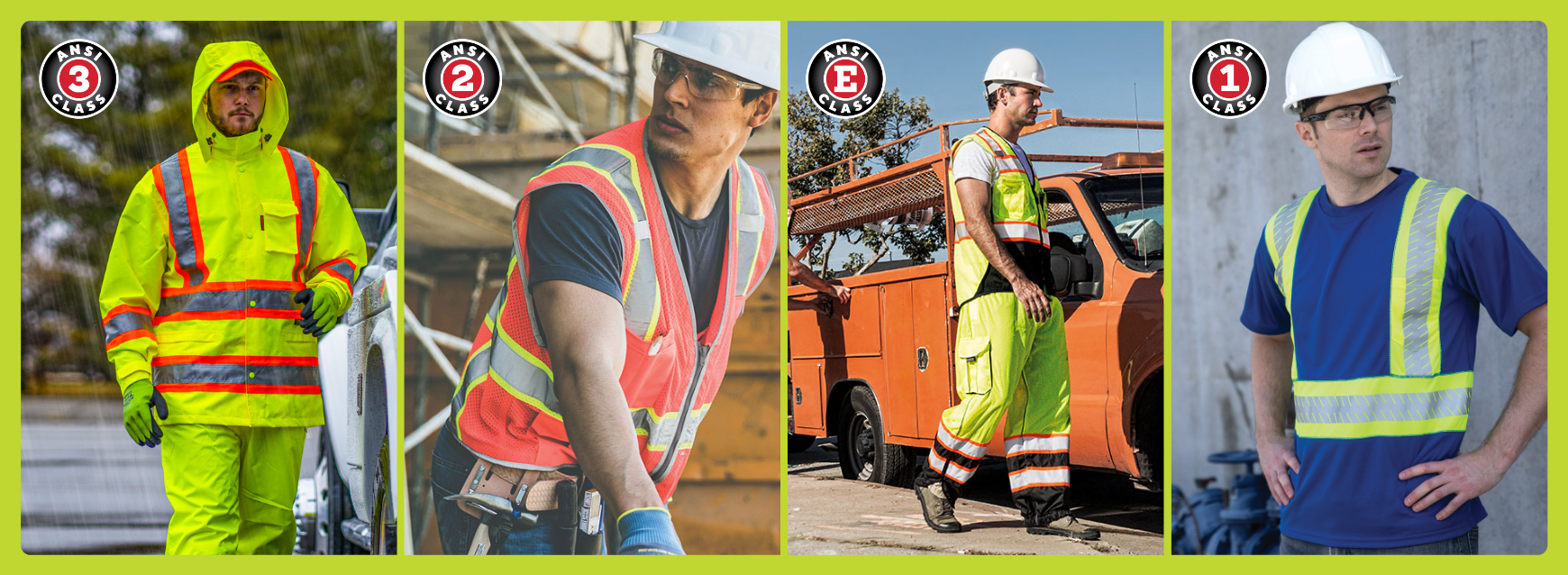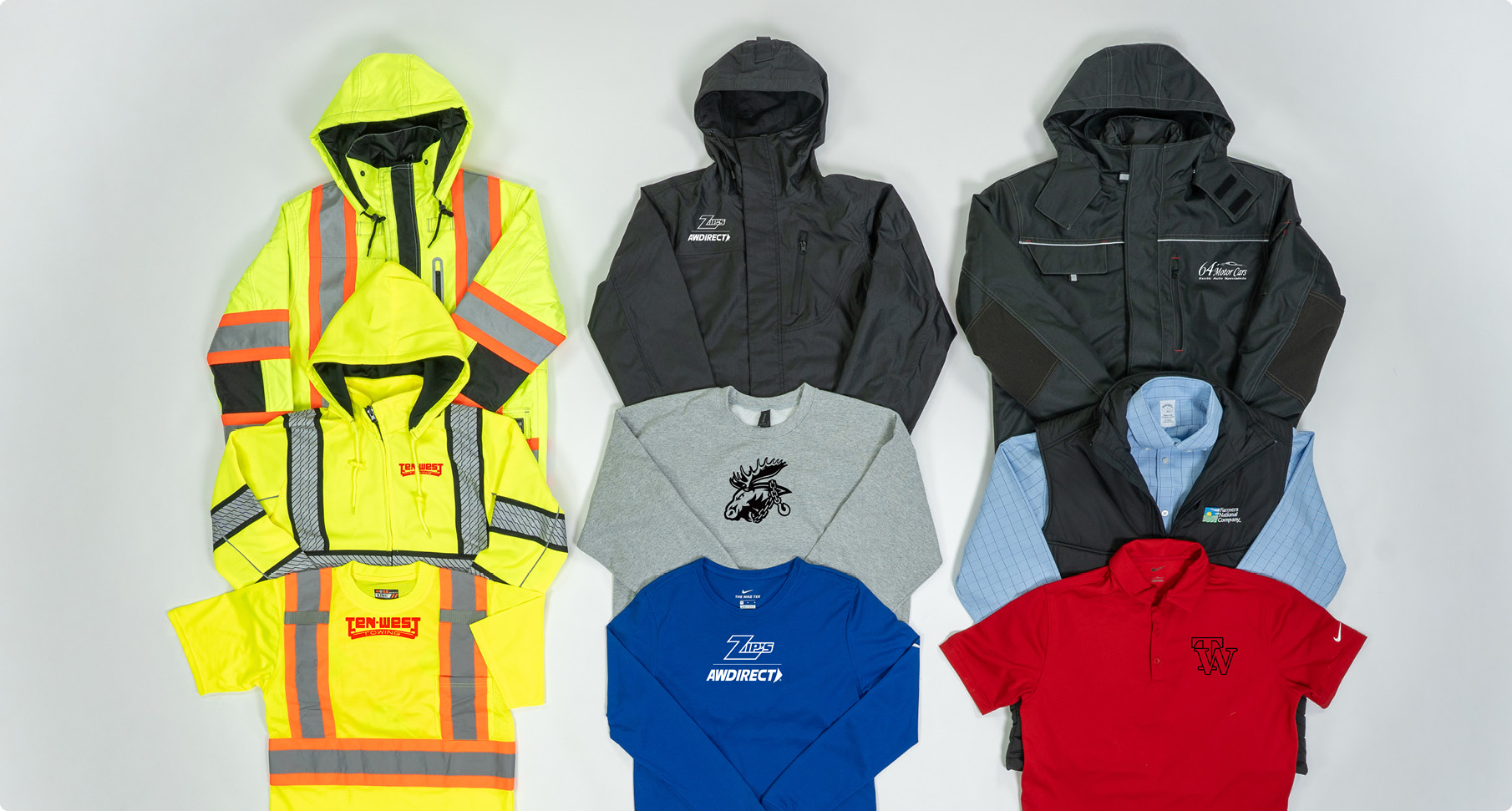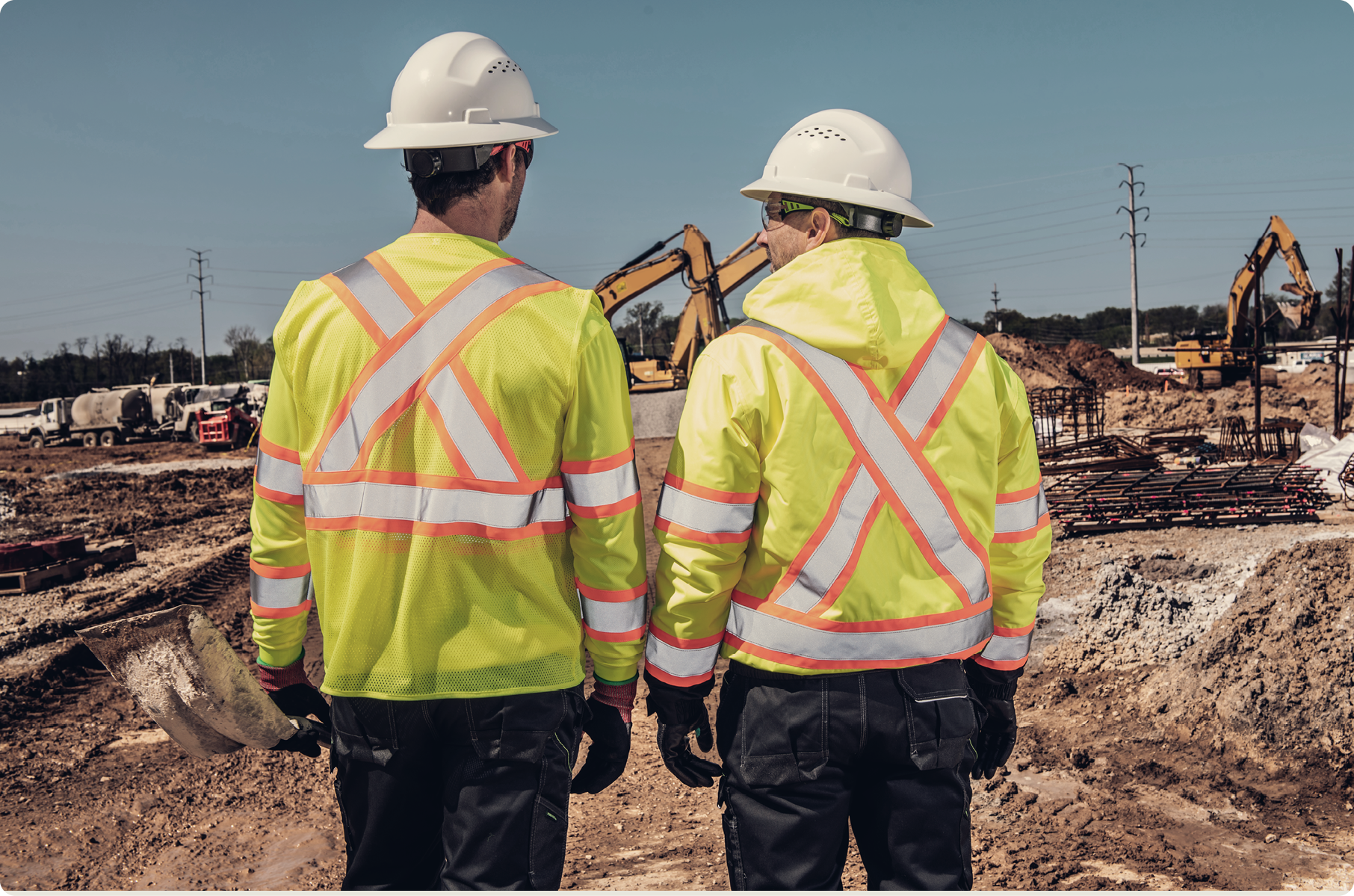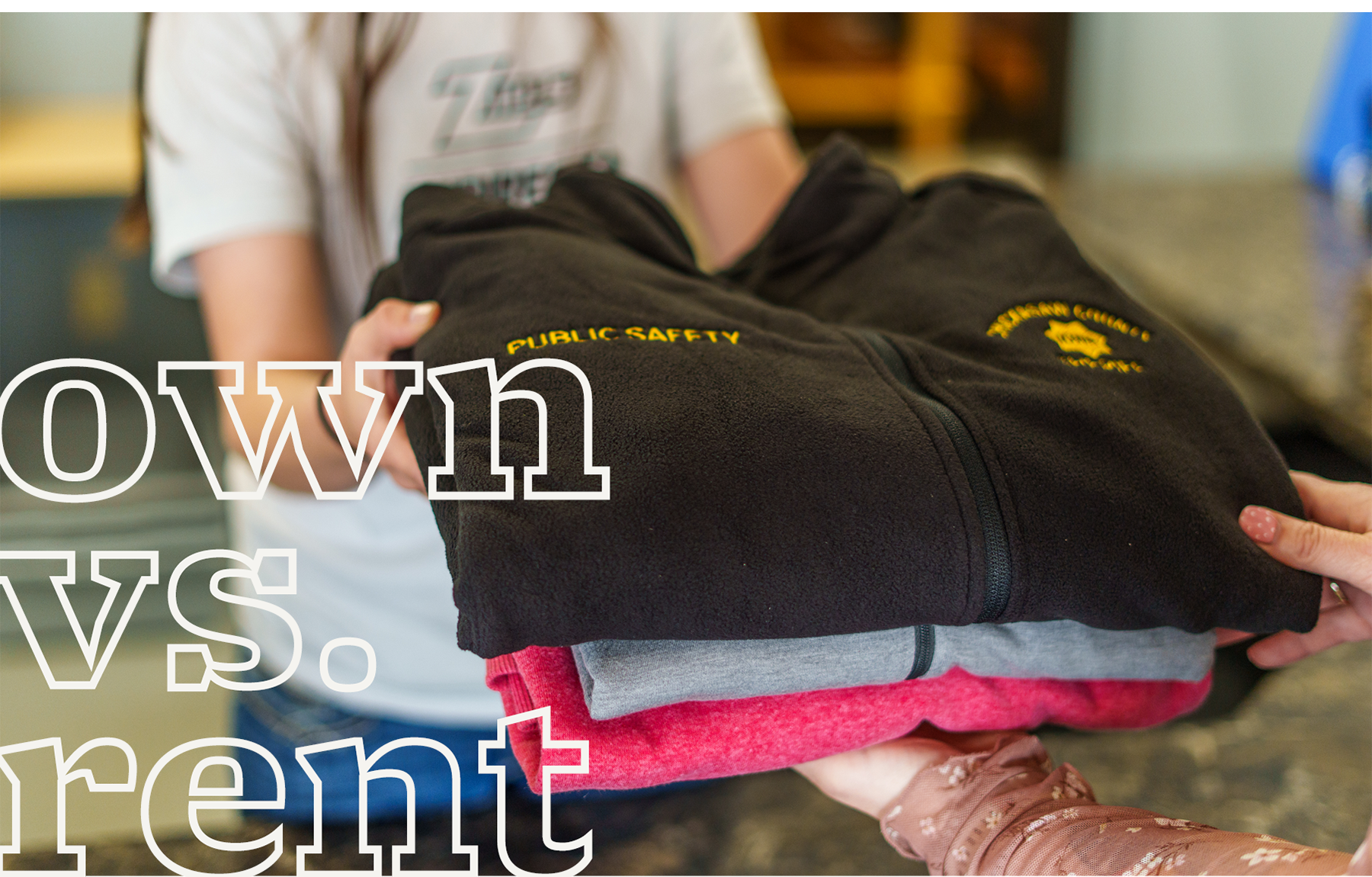ANSI Standards for Hi-Vis Safety Apparel

Where you work and what you wear makes a difference for your personal safety. as it relates to compliance with national standards for apparel and visibility on roadside construction projects and other high-traffic jobsites.
Two professional organizations have identified three types of work environments and three classes of apparel for these requirements. The International Safety Equipment Association (ISEA) develops the standards, and the American National Standards Institute (ANSI) approves them.
The ANSI/ISEA 107-2020 Standard on High Visibility Safety Apparel (HVSA) was first drafted in 1999. It outlines criteria for the general design, testing and labeling requirements for applicable garments.
These compositions use fluorescent colors and reflective striping to grab the attention of passing motorists and other workers. This is especially important for crews working in high-risk industries such as towing and recovery, construction, and emergency response.
The intent of these standards is to improve worker visibility and to reduce the number of roadside injuries and deaths. According to ANSI, nearly 1 in 5 construction workplace fatalities is defined as a “struck-by” injury. Which is when a worker is hit by a piece of equipment or vehicle.
Although the ANSI/ISEA 107-2020 is a voluntary standard, hi-vis apparel such as vests, shirts and jackets must be worn to comply with federal regulations that cover work environments where struck-by hazards are present. All hi-vis apparel should provide 360 degrees of visibility.
.png)
The apparel standard separates garments by type, according to the following document from hi-vis apparel manufacturer Kishigo: ANSI/ISEA 107-2020 - Basics
- Type O is for Off Road work in zones that have restricted access to public vehicles but still pose a low visibility struck by hazard.
- Type R is for Roadway work zones which include exposure to traffic (vehicles using the highway for purposes of travel) from public access highway rights-of-way or roadway temporary traffic control zones or from work vehicles and construction equipment within a roadway temporary traffic control zone.
- Type P is for First Responders who are exposed to all the hazards of Type R work zones but also have competing hazards or require access to special equipment.
The three main classes of garments are defined numerically. Each rule is affected by each Type category. Class 3 carries the most stringent requirements and is required for workers present near roadway traffic traveling in excess of 50 mph. Class 2 and Class 1 are less restrictive.
![]()
Class 3
In Canada, the Class 3 requirement calls for reflective stripes around the arms and legs and an X on the back of the apparel. In America, the standard looks at total reflective coverage contrasted against bright, fluorescent colors:
- For Type R environments, Class 3 apparel requires 310 square inches of reflective material and 1,240 square inches of background material
- In Type P environments, Class 3 also requires 310 square inches of retroreflective material but only 775 square inches of background material.
- The minimum width of the reflective material for Class 3 in both Types is one inch in split trim design.
Class 2
Class 2 is designed for crews working near roadway traffic traveling 25 to 50 mph. Again, compliance is measured by total surface area coverage:
- Class 2 for Type R requires 201 square inches of retroreflective material and 775 square inches of background material.
- Class 2 for Type P requires 201 square inches of retroreflective material and 450 square inches of background material.
- The minimum width of the reflective material for Class 2 in both Types is one inch in split-trim design.
Class 1
Class 1 is for off-road environments with traffic traveling below 25 mph. Workers may not be required by law to wear hi-vis apparel but may still work in an environment with moving equipment, vehicles and other potential harzards.
- Class 1 for Type O work environments require 155 square inches of retroreflective material and 217 square inches of background material.
- The minimum width of the reflective material is one inch.
Hi-vis pants, bib overalls, shorts and gaiters are designated Class E and do not meet HVSA requirements when worn by themselves. When a Class E item is paired with a Class 2 or Class 3 top, the overall classification is Class 3.
According to Kishigo, hi-vis apparel manufacturers are required to certify the performance requirements of the materials used and need to document that their finished products also meet the HVSA requirements.
It should also be noted that the position of company logos and lettering can affect the ANSI rating. Additionally, not all hi-vis apparel meets ANSI standards. To learn more, a copy of the HVSA can be obtained from the ANSI website at www.ansi.org.
Make sure your employees are safe and visible by understanding and following these standards. Calling attention to these high-traffic work zones through bright and colorful clothing with reflective striping can help reduce the risk for personal injury or death.




 Facebook
Facebook
 Instagram
Instagram
 TikTok
TikTok
 YouTube
YouTube
 Twitter
Twitter
 LinkedIn
LinkedIn





